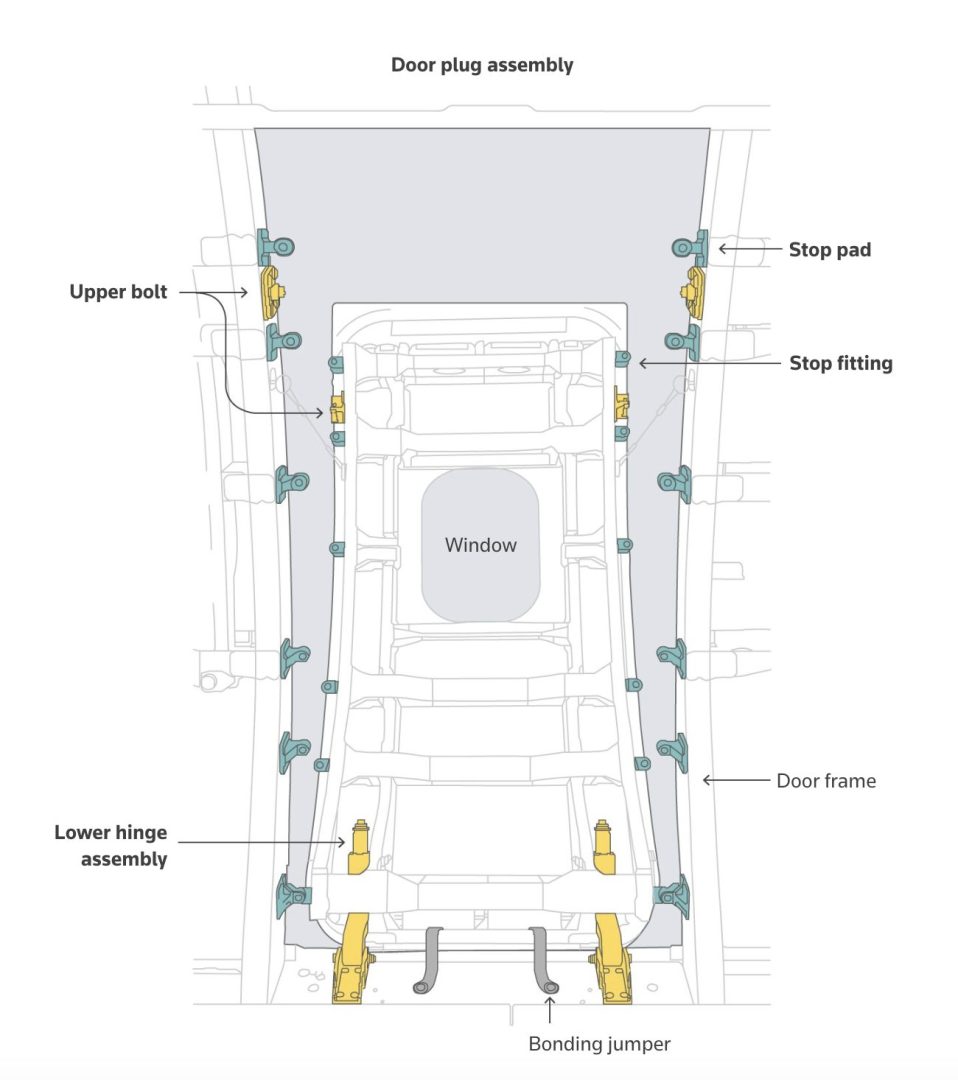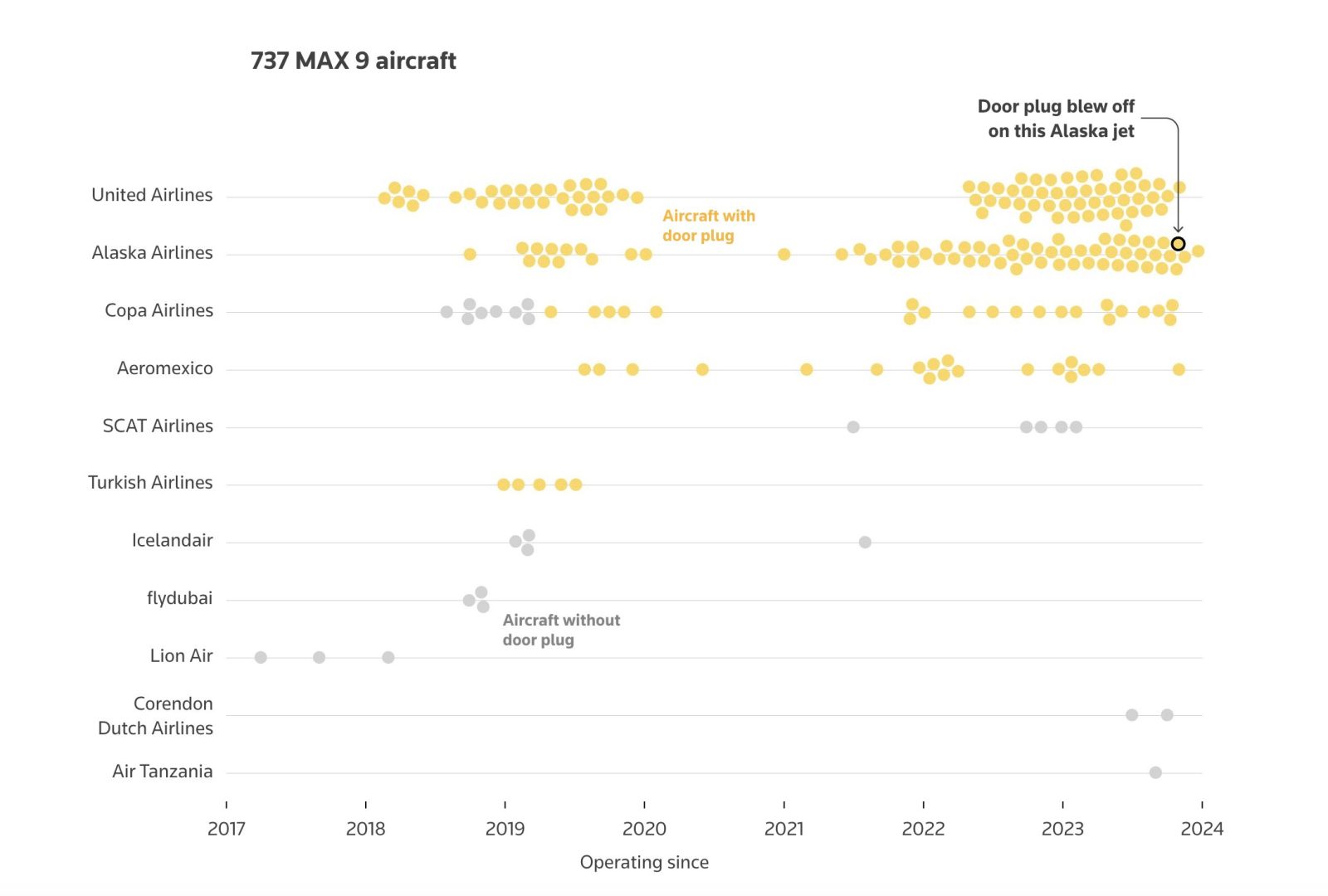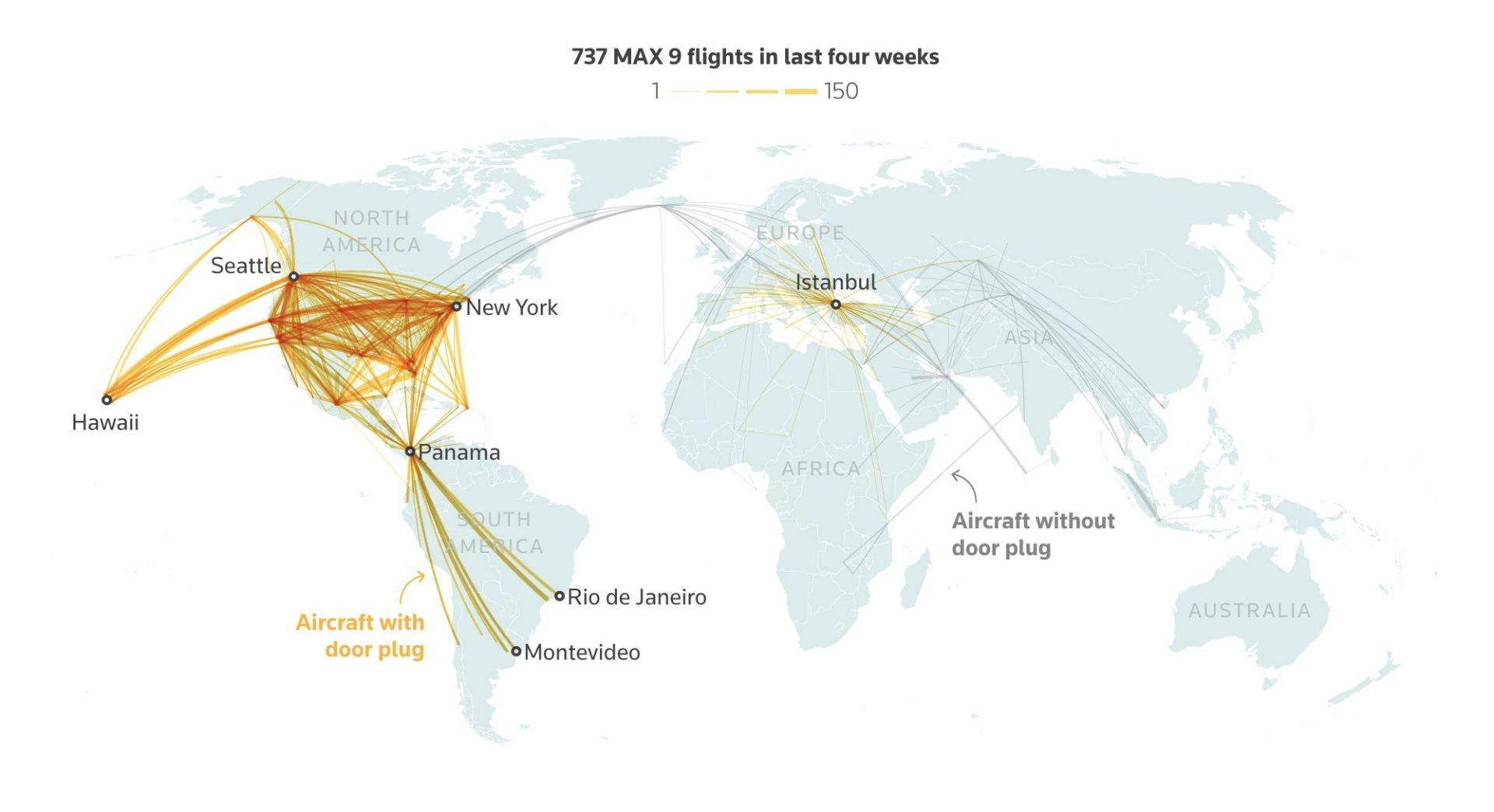Alaska Airlines Flight Incident and Boeing 737 MAX 9 Door Plugs Explained
On January 5, an Alaska Airlines Flight 1282 experienced a critical incident shortly after takeoff from Portland, Oregon, heading to Ontario, California. As the jet climbed to just over 16,000 feet, a panel on the side of the aircraft tore off, creating a refrigerator-sized hole. The pilots immediately decided to return and land the plane safely. Fortunately, all 171 passengers and six crew members survived, though several passengers sustained injuries. Notably, the aircraft had only been in service for eight weeks.
The Role of Door Plugs in Aircraft
The missing panel on the Alaska Airlines flight was a door plug, a component used on some Boeing 737 MAX 9 planes. This plug replaces an additional emergency exit door, depending on the aircraft’s seating configuration. The 737 MAX 9, Boeing’s largest single-aisle plane in production, can seat up to 220 passengers. If airlines opt for seating more than 189 passengers, an extra emergency exit door is required to meet evacuation regulations.

Aircraft configured with fewer seats can use a door plug instead of this additional exit. This design offers flexibility and has been common in the aviation industry, including on the 737 MAX 9’s predecessor, the Boeing 737-900ER.
How Door Plugs Are Secured
According to the U.S. National Transportation Safety Board (NTSB), door plugs are secured to the fuselage with four bolts: two in the upper corners and two in the lower hinge brackets. Additionally, twelve “stop fittings” along the side of the plug prevent it from being pushed out of the airframe, ensuring the structural integrity of the aircraft.

Prevalence of 737 MAX 9 Planes with Door Plugs
Boeing has delivered over 200 737 MAX 9 planes, of which 189 are equipped with door plugs instead of additional emergency exits. In the United States, airlines such as United and Alaska operate these planes. Other airlines with these configurations include Panama’s Copa Airlines, Aeromexico, and Turkish Airlines.
Following the incident, the Federal Aviation Administration (FAA) issued a grounding order affecting 171 planes operated by U.S. airlines or flying to U.S. territory. Even airlines like Turkish Airlines, which do not fly these planes to the U.S., have grounded them for inspection.

Impact on Flight Operations
Data from FlightRadar24 shows that since December 15, the majority of flights operated by Boeing 737 MAX 9s have been within the United States. Most planes configured with door plugs are based in the U.S., with some flying from Panama, Mexico, and Turkey. The grounding of these planes is likely to cause significant disruptions, particularly on routes operated by United and Alaska Airlines, which have the largest number of these aircraft.

Key Points
- An Alaska Airlines 737 MAX 9 experienced a panel loss mid-flight, necessitating an emergency landing.
- Door plugs replace additional emergency exits on aircraft with fewer seats, offering flexible seating configurations.
- These plugs are secured with bolts and stop fittings to maintain structural integrity.
- Of over 200 737 MAX 9 planes, 189 use door plugs, with 171 affected by the FAA grounding order.
- The grounding affects airlines in the U.S., Panama, Mexico, and Turkey, potentially causing widespread flight disruptions.





